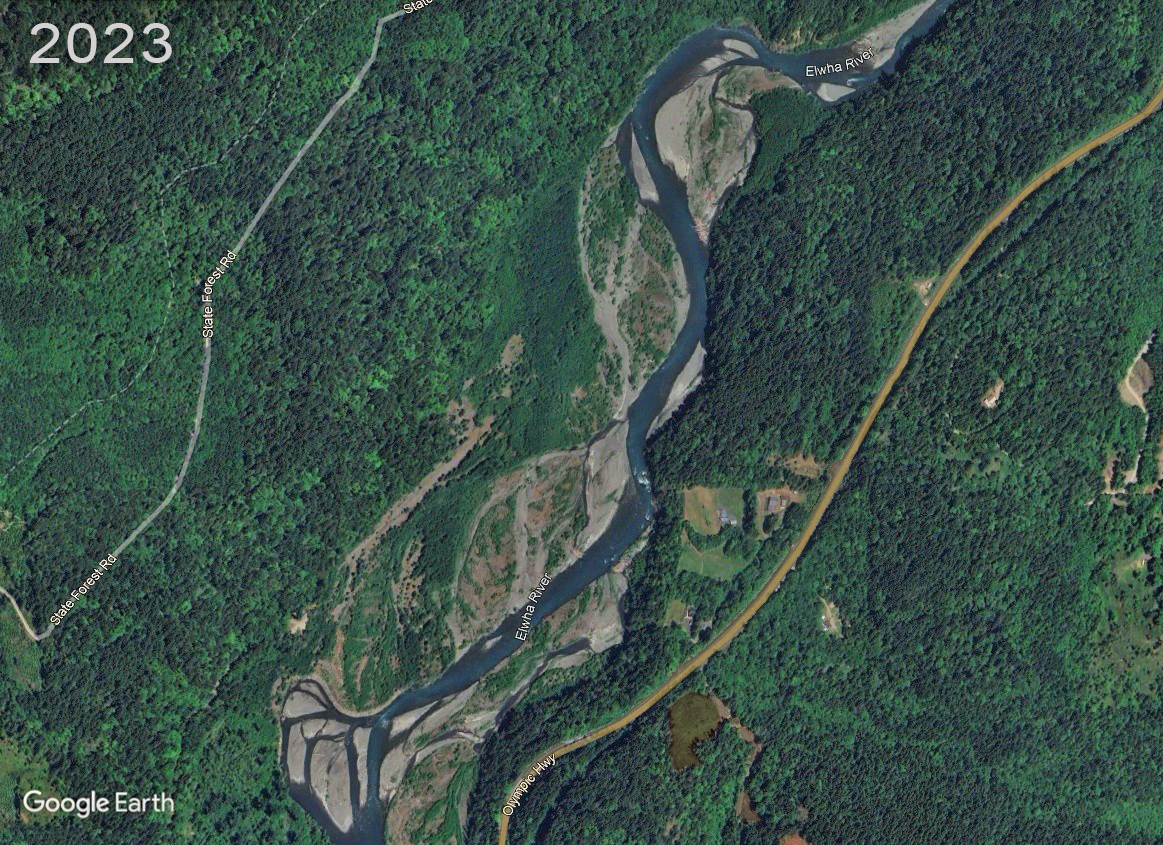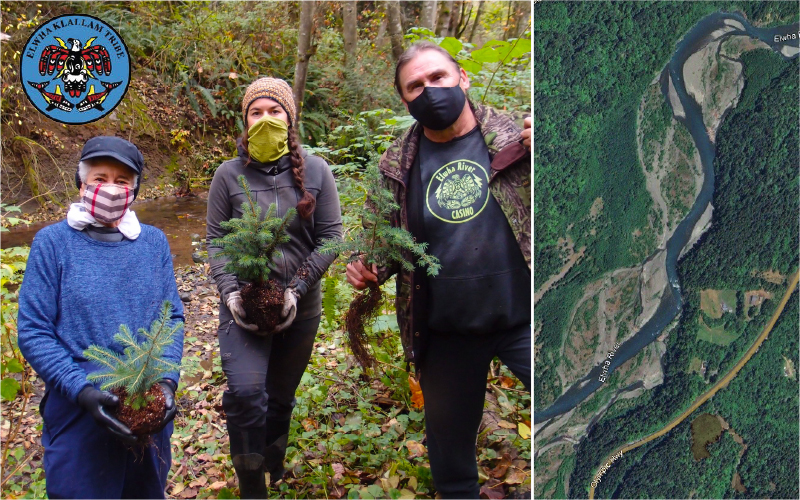Est. Read Time: 4 minutes
 We are honored to highlight a new, unique entry on the HNP Biodiversity MAP – the Aldwell Reservoir area of the Elwha Revegetation Project in Port Angeles, WA. This remarkable project represents approximately 270 acres of restored native habitat, helping to bring an incredible ecosystem back to life.
We are honored to highlight a new, unique entry on the HNP Biodiversity MAP – the Aldwell Reservoir area of the Elwha Revegetation Project in Port Angeles, WA. This remarkable project represents approximately 270 acres of restored native habitat, helping to bring an incredible ecosystem back to life.
It all began when several dams were built on the Elwha River in the early 1900's. These dams blocked fish passage, severely compromising salmon runs of all five species of Pacific salmon. They also heavily impacted the way of life of the Lower Elwha Klallam Tribe.


The tribe and a myriad of partners fought to remove the dams for 100 years. The Elwha River Ecosystem and Restoration Act was passed by Congress in 1992, but it wasn't until 2011 that the dam removal commenced. The Elwha Dam was fully removed in 2012, and Glines Canyon Dam was fully removed in 2013. At the time, it was the largest dam removal in world history.
The removal released an unbelievable 24 million cubic yards of sediment, which is eight football stadiums full to the roof! Crews got to work planting native species to help stabilize the area and kickstart the regeneration of biodiversity. In total, they planted 195,000 rooted plants, 30,000 live stakes, and 3,000 lbs of seed in the Lake Aldwell Reservoir.


Invasive species management is also an important component of the Elwha Revegetation Project. Maintaining the habitat for native plants to grow and keeping the noxious weeds from outcompeting the native plants has been crucial. Crews spend every summer battling the invasive species in the former reservoirs and surrounding watershed.
The work has paid off. Data shows a remarkable resurgence of the entire ecosystem, proving that nature will recover if given the opportunity. Salmon species are repopulating, bringing the unique “nutrient express” from the Pacific Ocean back to this area now that the salmon are once again able to complete their lifecycle.




The successful regeneration of biodiversity here is also being used to set a precedent for removing other outdated dams so that these ecosystems can begin to regenerate as well.
The returning nature is restoring not only the river and surrounding land, but it is also restoring a way of life. The Lower Elwha Klallam Tribe has partnered with NatureBridge to create a summer camp that teaches kids, many of whom are members of the tribe, about how the ecosystem works. This program emphasizes the bridge that connects science with tribal oral traditions and teachings on the importance of environmental stewardship. These are the first kids in over a century never to have seen the Elwha dammed.


Bravo to the Lower Elwha Klallam Tribe and all the scientists and conservationists involved in this historic project!
You can experience the same renewal of nature at a smaller scale in your own landscape. You’ll see native insects, birds and other wildlife return almost immediately when you begin to incorporate native plants, particularly keystone plants and keystone trees and shrubs.
Learn more about this incredible story by watching The Beautiful Undammed episode of WildHope.
Thank you to Allyce Miller, Revegetation Manager/Project Biologist at elwha.org.













